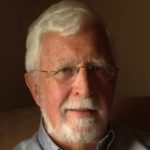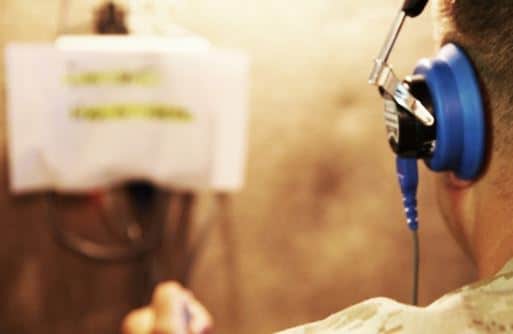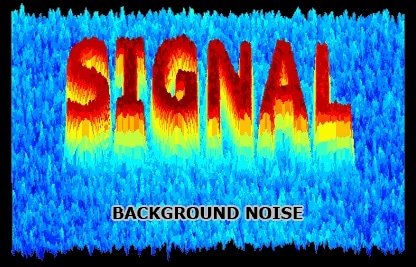Pattern recognition can be used to interpret pure tone test results as an essential aspect of a “smart” hearing health system that can sort basic hearing patterns into traditional audiological groups of routine or complex problems. Our software stemmed from many years of experience in audiology and medical clinics which included working at a major medical school, 40 years of clinical practice with ENTs, serving as chief audiologist in several hearing conservation programs operated by a Fortune 100 company as well as consulting with hearing aid manufacturers and developing The Canadian Hearing Society’s hearing aid dispensing program.
Some will know the frustrations occupational physicians felt with inconsistent industrial hearing screening tests and especially with the lack of clinical interpretation of the pure tone audiogram. In my case we were trying to follow a workers’ compensation policy that required referring any employee exhibiting an average change of 5 dB or more at three specified high frequencies. To do so regardless of the physical examination and employee’s clinical history was challenging to say the least. Inevitably the failure rate was high using such a pass/fail system; a disproportionate number of medical referrals were made for compensation assessments often in the absence and of any obvious noise exposure and with no observed medical problems. False positives were commonplace and costly in a workforce of 20,000.
This problem was compounded by industrial hearing contractors hired by the company to conduct tests who were rarely hearing specialists and used this simple rule of hearing level even after the introduction of computerized audiometers designed to standardize threshold convergence methodology. The company’s site-to-site noise induced numbers varied widely and were traced back to not using an audiologically and medically consistent interpretation by pattern and level. Pure tone averaging provided little, if any, indication of the site of lesion and almost certainly created an increased number of both false positives and false negatives for hearing changes.
Without knowing the pattern of hearing and using only changes in level, the site and/or possible cause of a hearing change was difficult to assess medically without a referral. When the pure tone audiogram was interpreted by pattern and level, however, and coupled with a physical examination and history, the incidence of false positives and false negatives declined dramatically. It also provided the process necessary to determine the possible site of lesion of a hearing problem and degree of communication difficulty. Treatable (i.e. medical) problems could be separated and referred effectively from permanent ones warranting assessments for hearing aids due to noise exposure.
Given my interest in computer technologies and what was then the fledgling field of AI research, the challenge became how to automate a credible hearing triage process using pattern recognition to take account of both the pattern and level of an audiogram.
The initial training data was derived from an audiological battery of pure tone tests gained by using an industrial computerized audiometer with a fully implemented Carhart-Jerger threshold protocol and a manual clinical audiometer with bone conduction and speech testing conducted in sound room within a medical setting. I reasoned that this combination of pure tone threshold techniques would represent as closely as possible the human pure tone convergence biases or variability that can occur when establishing pure tone thresholds in large pure tone data samples.
The first round of pure tone results consisted of 1,900 samples and was stored in a local database on a personal computer. A standard audiological interpretation was visually applied and manually recorded for each test. The resulting data was fed into pattern recognition software which produced sets of polynomials or algorithms (pattern recognition/machine learning code) and confidence coefficients representing an automated interpretation of each audiogram. They were then vetted audiologically for each pure tone assessment, in many cases in conjunction with ENT assessments, to rule out as much as possible false positives and negatives due to underlying medical problems. The confidence coefficients were helpful in predicting outliers and patient variability in responding and the pattern recognition software was rerun when they seemed high.
Machine Learning and “Hearing Triage”
This machine learning approach aided in making professional judgements so clinical accuracy of the findings could be further qualified. The confidence coefficients also became a tool for accessing the impact of patient errors in responses to external factors not related to the person’s actual hearing. These included physical and mental issues, computer and headphone problems, background noise, network connections and cabling difficulties.
When unusual audiological patterns were found and/or had a low confidence coefficient and insufficient representative results were not available, a random audiogram generator was developed and used to duplicate the unusual audiogram or outlier. Not every case could be accounted for so they were re-inputted and the confidence coefficients used as a guide for retraining the system to interpret them as a mixed hearing loss, assuming that would trigger a speciality referral for a more advanced workup.
We called this process of pure tone pattern recognition “Hearing Triage”. It sorted pure tone audiograms into standard audiological classifications of normal, conductive, sensorineural and mixed and levels by dB level into normal, mild, moderate, severe and profound. The level could be used as a measure to sort further into estimated hearing communication ability. We were confident that this type of screening approach would help guide both professionals and end users in identifying best next steps to follow as well as provide some early indication of the success of the recommendation.
The second and third rounds of polynomial creation utilized over five thousand industrial pure tone hearing tests derived from a variety of pure convergence techniques. Like the first, these results were interpreted by pattern and level using standard visual interpretation based on traditional audiological methods. These interpretations were then entered into an abductive software learning system with the actual pure tone audiograms that generated the initial polynomials. Retraining the system to reduce the number of outliers or misinterpretations to an acceptable level took several years of work.
Implementing this new approach resulted in several reforms. Those employees with patterns and levels associated with outer or middle ear problems were sent to a primary care doctor who incorporated the reports into a diagnosis. Others with patterns and levels associated with noise exposure were documented internally prior to being sent to an ENT. When early signs of noise damage were evident, the employee was monitored consistently. Those who met the criteria for compensation were sent with a more detailed work-up about their noise exposure history both at work and elsewhere. And costs for claims were lowered significantly when the company, having gained confidence in the new process, began funding hearing aid assessments and devices internally prior to submitting a claim for those employees needing amplification.
Wider adaptation followed. An entirely software-driven audiometer was invented and united with early versions of the hearing health software to form a complete pure tone testing and assessment system. It was used regularly in the hearing conservation programs of large firms like GM, Litton Industries, Gulf Canada, Ford, Duracell and several others. Programs were also developed for school boards, the Canadian military, primary care physicians as well as hearing aid manufacturers and their retail dispensers. From that point, the system gradually evolved into an internet-enabled approach funded in large part by the Canadian government as well as private investors. It was the first to test successfully on the web.
More recently, the power of Hearing Triage has been applied to the routine practice of family physicians who are well positioned to become gatekeepers for promoting hearing health among their patients. Pharmacies are also being served given their advantage as a trusted source of information and services. Networks of providers are considered to be critical and an ecosystem and end-to-end processes for self administered testing, assessment and streaming towards solutions have now been created. Hearing Triage anchors a growing value chain of technologies including hearing device triage and direct-to-consumer capabilities.
Developments and trends now indicate that hearing health and the hearing market broadly defined is moving through an important transition. We share the hope that millions more people who to date have found themselves on the sidelines will be engaged, assessed and treated. New opportunities driven by revised business models and delivery methods will inevitably emerge. And efficient methods of hearing triage will be an important ingredient to making this future work.
This article was originally published by Hearing Health & Technology Matters on August 20, 2018. Click here to read the original article.
 Errol Davis is a director, Chief Audiologist and Data Scientist at Ultimate Kiosk. In addition to maintaining a private clinical practice with several ENT’s for over 30 years and consulting for a wide range of prominent public and private clients, he has taught at the medical school at the University of Toronto and served as the chief audiologist at the Toronto General Hospital, Canadian Hearing Society and Gulf Canada. He was the first to apply artificial intelligence in the form of polynomials and confidence coefficients for the classification of hearing using advanced computer technologies. Errol holds degrees in Audiology and Speech-Language Pathology from Western Michigan University and Michigan State University.
Errol Davis is a director, Chief Audiologist and Data Scientist at Ultimate Kiosk. In addition to maintaining a private clinical practice with several ENT’s for over 30 years and consulting for a wide range of prominent public and private clients, he has taught at the medical school at the University of Toronto and served as the chief audiologist at the Toronto General Hospital, Canadian Hearing Society and Gulf Canada. He was the first to apply artificial intelligence in the form of polynomials and confidence coefficients for the classification of hearing using advanced computer technologies. Errol holds degrees in Audiology and Speech-Language Pathology from Western Michigan University and Michigan State University.


